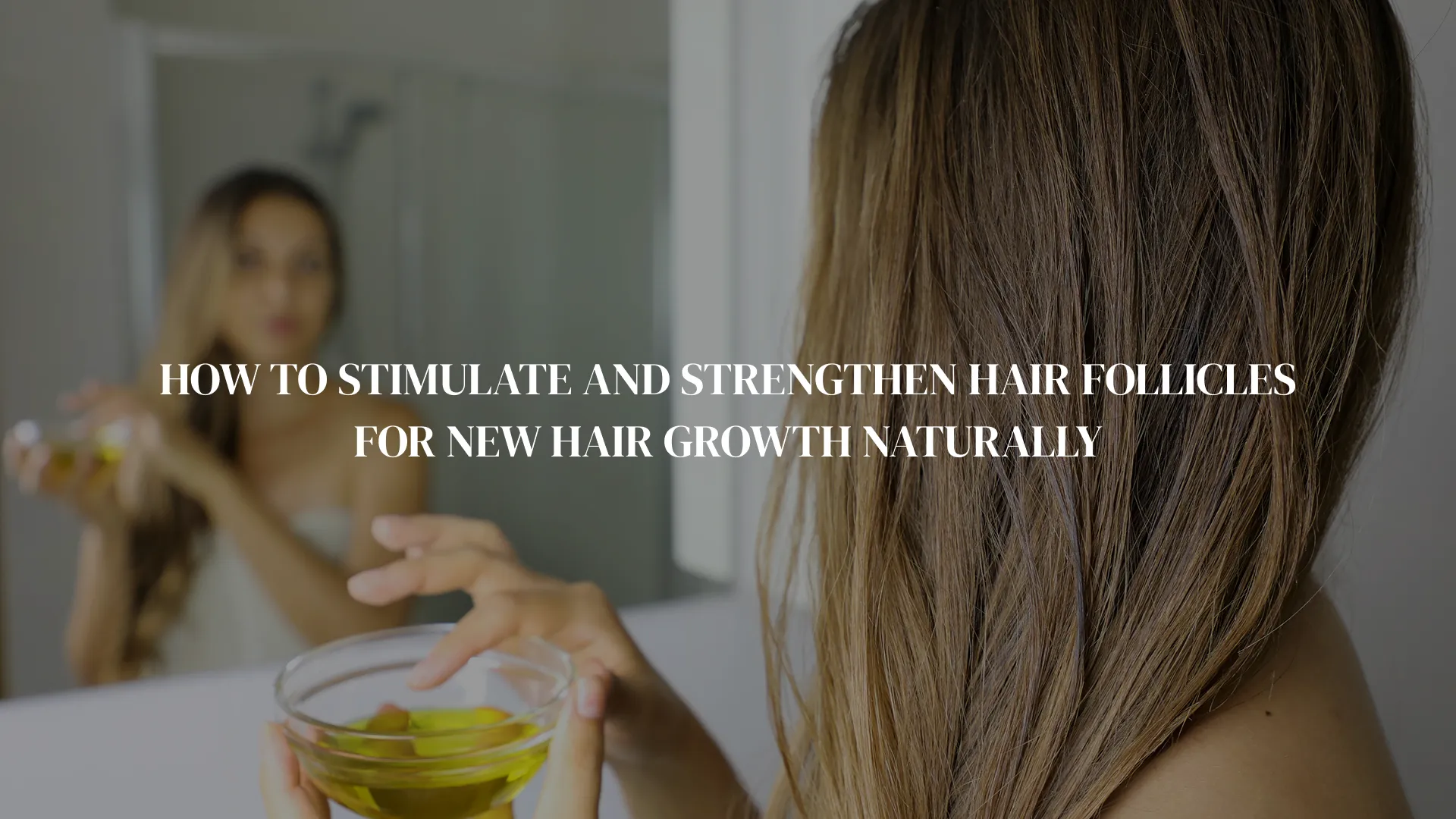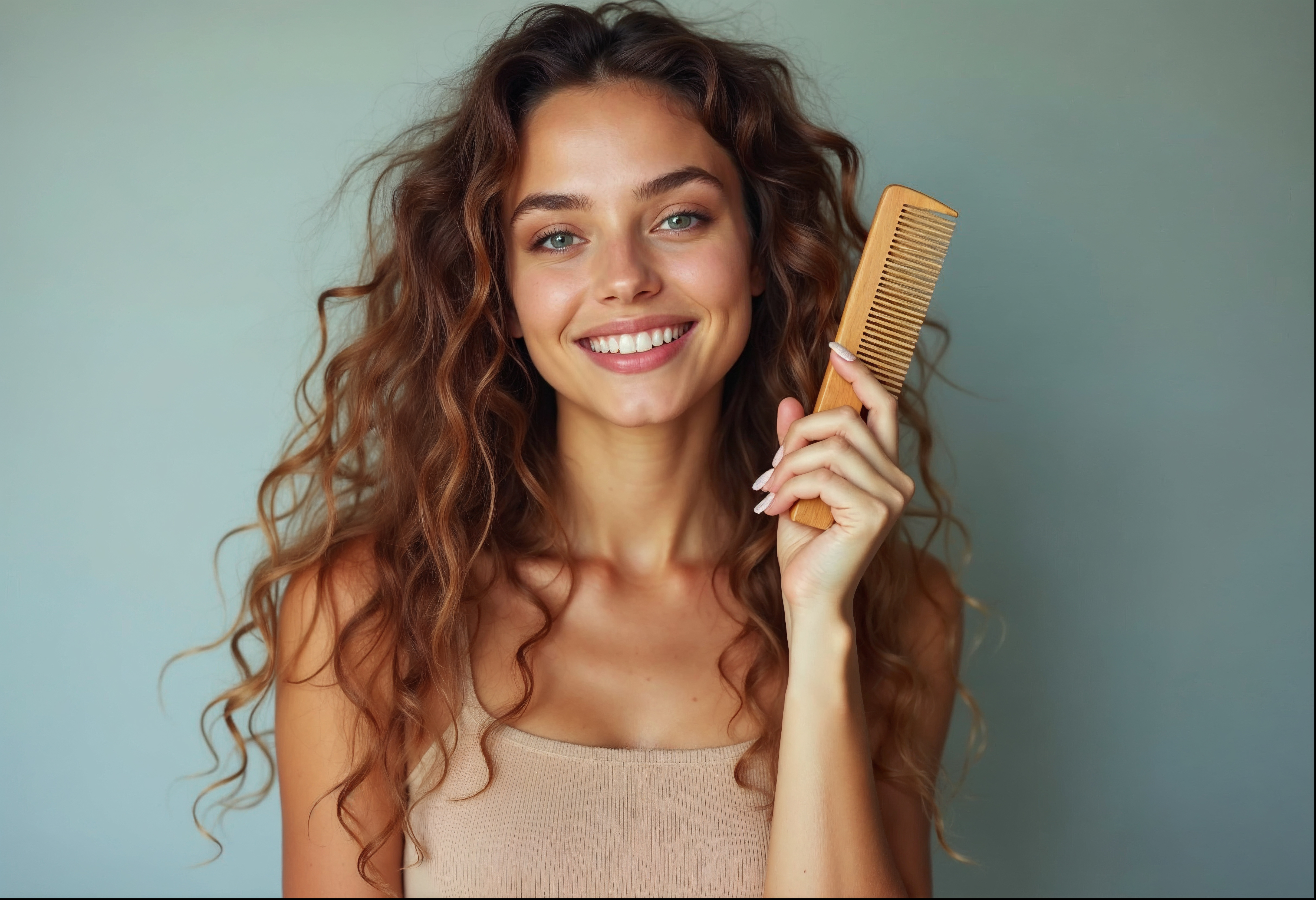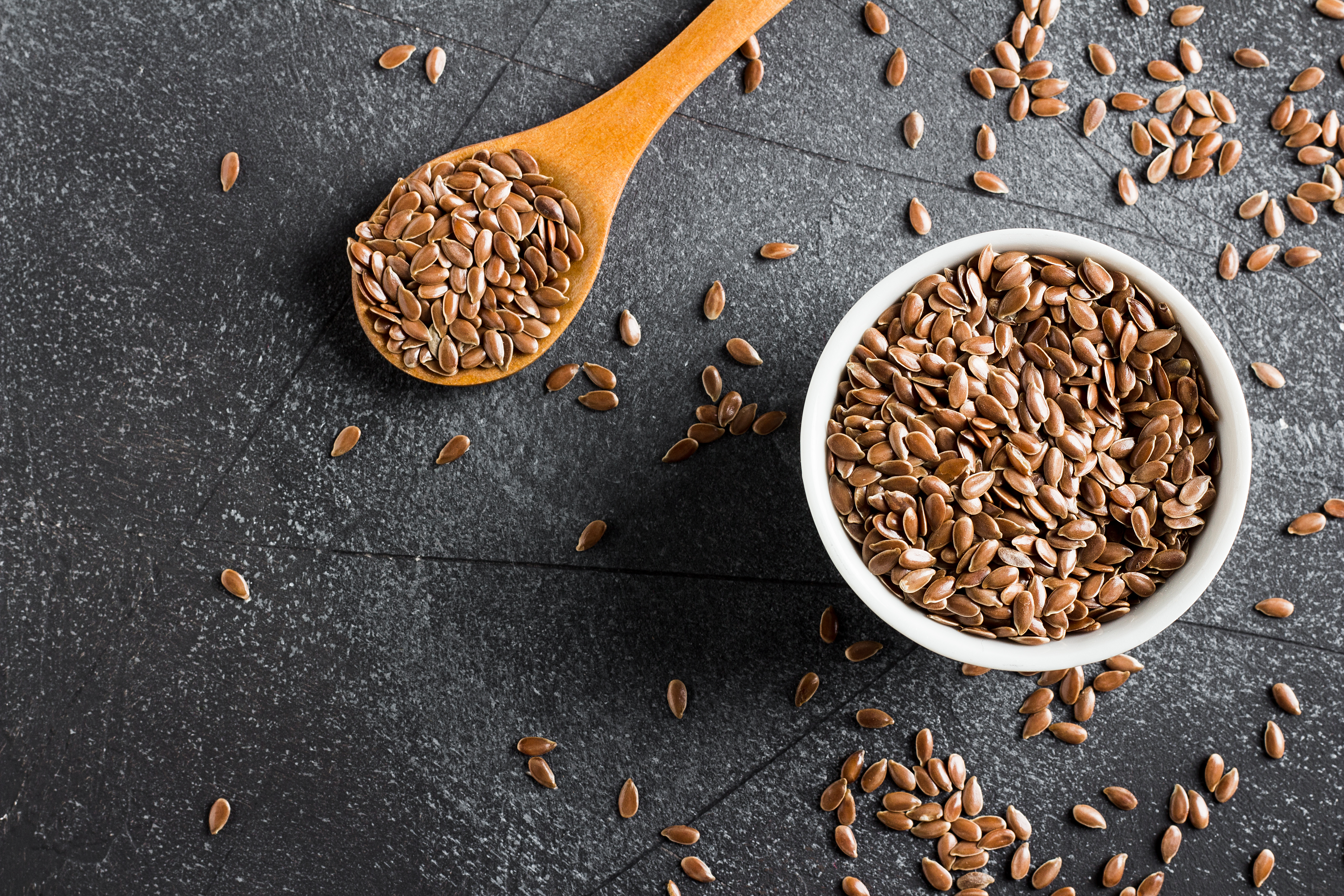If you want healthy hair, you have to care for the part you cannot see. The visible strand is just the result. What truly matters lies below the surface, inside your scalp. That is where your hair follicles live. Each one is like a small pocket that holds the root of your hair and gives it the support it needs to grow.
When your follicles are healthy, your hair grows strong, dense, and full. But when they weaken, the hair starts to change. It may become thinner, shorter, or fall out more easily. Over time, if nothing is done, those weak follicles may shut down completely.
This is something many people notice but don’t fully understand. They try different shampoos or apply random oils, hoping for quick fixes. But unless you take care of your roots, the problem keeps coming back. What you really need is a way to restore your follicles from within.
There are simple steps that can help. Natural methods work slowly but they work deep. You do not need chemicals to fix your hair. You need better habits. If you’ve been looking for how to increase hair follicles or how to make hair follicles strong, that’s the right question to ask.
This blog is here to give you clear, honest answers. It will not offer shortcuts, but it will show you what works. You will learn how to clean your scalp properly, how to feed your roots, and how to bring life back to follicles that have gone silent.
By the end, you will understand how to stimulate hair follicles naturally. You’ll also know what to avoid, what to focus on, and how to create the right conditions for fresh, healthy growth without damage, stress, or empty promises.
What Causes Hair Follicles to Weaken or Go Dormant
Hair follicles do not shut down without a reason. Often, it happens slowly. The scalp gets less blood flow. The body lacks nutrients. Hormones change. These problems reach the roots, and over time, the follicles stop working.
Here are the main reasons behind follicle weakening:
- Poor circulation to the scalp reduces oxygen and nutrient delivery to the roots.
- Low protein, iron, or zinc in your diet affects keratin production.
- Stress interferes with hormone levels that control hair growth.
- Thyroid issues or PCOS can disrupt follicle function.
- Regular use of hot tools damages hair at the root level.
- Tight ponytails or braids cause tension and root injury.
- Buildup of product or dandruff blocks the follicles and reduces hair output.
- Lack of sleep or dehydration limits the body’s natural repair process.
These triggers slowly push follicles into a resting phase. Some may become dormant. Others may shrink and produce thinner hair. If you are searching for how to grow new hair follicles, start by removing these blockers. Your roots can recover, but only if the scalp is clean, nourished, and calm.
Signs Your Hair Follicles Need Recovery
Your scalp often gives signals when something is not right. If you watch closely, you can spot the early signs before serious hair loss starts.
Look out for:
- Slower regrowth after hair fall or breakage
- Visible scalp patches, especially near the crown or hairline
- Dry, itchy, or flaky scalp, even after washing
- Thinner strands that do not hold volume or texture
- Uneven growth patterns, with some areas growing slower than others
- Frizzy or brittle texture, even if you avoid heat styling
These signs are your body’s way of telling you that the follicles need help. Don’t ignore them. If you act early, recovery is easier and more effective.
If you notice any of these changes, it’s time to shift focus from surface-level treatments to deep root care. That’s when it becomes necessary to learn how to stimulate hair follicles and protect the ones you already have.
Nutrients That Fuel Strong Hair Follicles
Hair cannot grow well if the body is lacking in basic nutrition. Strong follicles need a steady supply of vitamins, minerals, and protein. Without that, even the best oils or treatments will not help.
Protein is the foundation. Hair is made of keratin, a type of protein. Without enough protein, the hair strand becomes weak, and the follicle does not work as it should. Iron is also essential. It helps carry oxygen to the scalp. Low iron is one of the most common causes of hair loss, especially in women.
Zinc is another key mineral. It supports tissue repair and helps prevent the hair from falling too early. Biotin, also called vitamin B7, improves the structure of the hair and supports growth. Omega-3 fatty acids keep the scalp moist and healthy, preventing the roots from drying out. Vitamin D helps activate follicles that have become slow or quiet.
If your diet is missing these nutrients, your hair will show it. Try to add simple whole foods like:
- Eggs
- Lentils
- Nuts and seeds
- Leafy greens
- Fish or curd
- Seasonal fruits
Also, check if your digestion is healthy. If your gut is not absorbing nutrients well, even a balanced diet may not help.
If you’ve been wondering how to make hair follicles strong, this is where to start. No treatment can replace a healthy diet. Nourish your body, and your scalp will follow.
Natural Oils and Scalp Massage Techniques
Oil and touch are both deeply healing for the scalp. When you apply oil and massage it in, you do two things. You nourish the skin and roots with natural ingredients, and you stimulate blood flow. This combination supports follicle function and can wake up roots that have slowed down.
Massaging your scalp with your fingertips for five to ten minutes boosts circulation. The pressure helps the blood vessels expand slightly, sending more oxygen and nutrients to the base of the follicles. It also helps reduce stress, which indirectly supports better growth.
Certain oils are better for this job than others.
- Rosemary oil helps increase circulation and has been linked to improved hair density.
- Peppermint oil offers a cooling effect that supports follicle stimulation.
- Castor oil is rich and thick, helping moisturize and protect the scalp barrier.
- Coconut oil keeps the scalp clean and reduces protein loss from the roots.
Warm a small amount of oil and apply it to your scalp in sections. Use the pads of your fingers and apply gentle pressure in slow, circular motions.
If you want to know how to stimulate hair follicles naturally, this is one of the easiest and oldest methods. It costs very little, takes only a few minutes, and shows real results over time. Just stay consistent and avoid over-washing.
DIY Scalp Treatments for Stimulation
You don’t need expensive products or clinical tools to reactivate your roots. Several easy scalp treatments can support your follicles right at home.
Try these safe and simple techniques:
- Dermarolling: Use a 0.5 mm roller once a week to increase blood flow and cell activity. Always sanitize it before and after.
- Warm towel wrap: After oiling, wrap a hot wet towel around your scalp to open pores and improve absorption.
- Egg and curd mask: Rich in protein, this blend helps feed the roots. Use once a week for 20 minutes before rinsing.
- Aloe vera gel: Soothes irritation and keeps the scalp cool, which helps stressed follicles recover.
- Gentle scalp brushing: Use a soft-bristle brush to increase daily blood circulation without damage.
If your goal is how to increase hair follicles, these methods help support the scalp’s natural repair process. They are simple, effective, and easy to add to your weekly routine.
What to Avoid if You Want Healthier Follicles
Protecting your hair starts with avoiding what causes harm. These habits damage the scalp and weaken the follicle over time.
Avoid:
- Excessive heat styling, which dries out and weakens the roots
- Tight hairstyles, like buns or ponytails, that pull at the scalp
- Sulfate-heavy shampoos, which strip natural oils and irritate the skin
- Frequent washing, especially with hot water, which dries out the scalp
- Hard water exposure, which leaves behind mineral buildup that blocks follicles
- Heavy product buildup, which clogs the scalp and suffocates roots
If you’re serious about how to make hair follicles strong, avoiding these daily mistakes is just as important as adding new treatments. Healing starts with protection.
Daily Habits That Improve Follicle Strength
Small daily habits shape long-term hair health. You do not need complex routines. You need consistency in the basics.
Adopt these habits to support your follicles every day:
- Sleep at the right time: Rest allows your body and scalp to repair naturally. Aim for 7–8 hours.
- Drink more water: Hydration keeps your scalp moist and improves follicle function.
- Eat clean and balanced meals: Nutrient-rich food feeds your roots with what they need to grow.
- Stay active: Light movement improves blood flow to the scalp, supporting hair growth.
- Keep your scalp clean: Wash 2–3 times a week with mild shampoo to avoid buildup.
- Oil your scalp regularly: Use light oils and massage gently to boost circulation and reduce dryness.
- Avoid harsh chemicals: Stick to natural products that do not strip the skin of protection.
If you are looking for how to increase hair follicles, these habits create the foundation. Healthy hair starts with what you do every single day.
There is no instant fix when it comes to hair. Follicles need time, care, and the right environment to work again. Treating the scalp gently, feeding the roots, and giving the body what it needs are the real solutions.
You now know how to stimulate hair follicles, how to increase hair follicles, and how to make hair follicles strong through real, natural methods. These steps do not require harsh products or guesswork.
Be patient. Stay consistent. Let your body and scalp do their part. Real change always starts at the root.
FAQs
Que) Can poor sleep affect hair follicle function?
Yes. Sleep is when the body repairs itself. If you are not sleeping well, the repair process slows down. Over time, this affects blood flow and hormone balance, both of which are important for healthy hair follicles and natural growth.
Que) Do hats or scarves block hair growth by suffocating follicles?
No, wearing hats or scarves does not suffocate hair follicles. Hair grows from inside the scalp, not the surface. But if headwear is too tight or causes friction, it may irritate the scalp. Choose breathable fabric and avoid wearing it for very long hours.
Que) Can I use onion juice to stimulate follicles?
Onion juice contains sulfur, which may improve circulation to the scalp. Some people report better volume with regular use. It’s not a miracle cure, but it can support how to stimulate hair follicles when used along with a clean diet and gentle scalp care.
Que) Is dry shampoo harmful to follicles?
Using dry shampoo occasionally is fine. But using it often without washing your scalp can clog pores and reduce oxygen flow. This may weaken hair follicles over time. Make sure to clean your scalp regularly to avoid buildup.
Que) Can brushing my hair too much damage follicles?
Yes. Overbrushing or using hard brushes can tug at the roots and strain the scalp. This may stress or weaken the hair follicles. Use a soft-bristle brush and avoid brushing when hair is wet or tangled to reduce damage.
Que) How long does it take to see results from scalp massage?
Most people see early signs of improvement within 6 to 8 weeks. Massage boosts circulation, which helps support how to increase hair follicles naturally. Consistency is key. You won’t see changes overnight, but regular practice gives lasting results.
Que) Do genetics control hair follicle strength completely?
Genetics play a role, but they do not decide everything. Daily care, stress levels, and nutrition also affect how to make hair follicles strong. Even with a family history of thinning, you can still improve your own scalp health through lifestyle changes.
Que) Does dandruff reduce new hair growth?
Yes. Dandruff can block the scalp and cause irritation. This makes it harder for hair follicles to stay healthy. If the scalp is inflamed, the roots receive less support. Clearing up dandruff early helps protect existing hair and supports future growth.
Que) Can hair coloring damage the follicle itself?
Most damage from hair dye happens to the strand, not the follicle. However, frequent chemical treatments can irritate the scalp. Repeated exposure may cause inflammation, which affects how well the follicles perform. Use safer, ammonia-free dyes if you color regularly.
Que) Is it possible to reopen closed follicles after years?
Fully closed follicles may not reopen. But if they are only dormant, they can be reactivated. Techniques that support how to grow new hair follicles often work by waking up these resting roots. Starting early and staying consistent gives the best chance of success.



